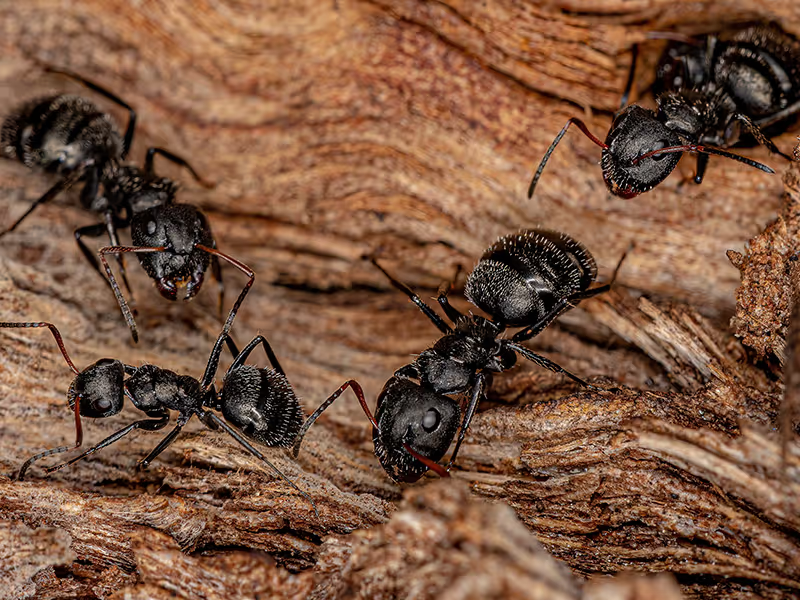Ants have three distinct body parts: head, thorax, and abdomen. These three parts resemble a string of beads with a pinch between each bead. Off the main body, ants have six legs and two antennae. Between the middle body part (the thorax) and the last body part (the abdomen), ants have one or two nodes. Carpenter ants have one node. However, they are not the only ants with one node; you’ll need more details to identify carpenter ants on your property. Here are the identifying traits to look for:
You may distinguish carpenter ants by these visual characteristics, but the best way to tell a carpenter ant from other insects is by looking for the frass they generate. Frass is a material composed of wood shavings, insect parts, and fecal matter.

The quickest way to determine whether you’re looking at a carpenter ant or a termite is simply by the fact that you’re seeing it. While carpenter ants are nocturnal insects, you may still see one during the day, perhaps sitting on your deck or exterior wall. You aren’t likely to see worker termites, even at night, unless you uncover them. For example, if you pick up a dead branch and look underneath it, you might find a handful of termites on the soil or wood. Termite workers are exceptionally good at hiding from view. Here are a few more ways you may distinguish termites from carpenter ants:
If you find worker termites on a dead branch in your yard, you’re not likely to see them for long—they will quickly disappear into the wood.
Carpenter ants are only dangerous if you’re a piece of wood. While they do have the ability to bite, their bites typically cause only minor, irritating wounds. The real danger presented by these insects is their ability to damage property. They create galleries inside wood and establish nests. These nests grow and produce winged reproductives. The reproductives leave the nest and create new nests, often near the original one. Over time, a small infestation can turn into a large and destructive one if conditions are favorable.
Carpenter ants are drawn to properties that provide what they need for survival and reproduction: food, water, and ideal nesting conditions. Consider these factors in your yard to deter carpenter ants:
Food
Water
Nesting
Addressing these attractants can deter carpenter ants, but for effective control of these pests, we recommend getting a professional pest control service plan.
Carpenter ants prefer to nest in moist or decaying wood sources. They do this both outdoors and indoors. When they find their way indoors, they seek out areas with higher humidity or moisture-damaged timbers. Window and door frames, bathroom walls and floors, and wood around leaky plumbing are ideal locations for carpenter ants.
Are nighttime rustling sounds a sign of carpenter ants?
Yes. Carpenter ants create a rustling sound when they climb through their wood tunnels. The sound is produced by the clicking of their tarsal pads (claws) as they grip the smooth tunnel walls. You may also hear a muffled crinkling sound. This is the sound of carpenter ants gnawing on wood with their mandibles. You are more likely to hear these sounds at night, as carpenter ants prefer nocturnal activity. Keep in mind that if you can hear rustling, it is a sign of a large infestation. It takes many ants to create a significant sound.
The best way to prevent a carpenter ant infestation is to apply ongoing pest management around the exterior of your home. Since carpenter ants are a potential threat to property and behave in sneaky ways, we recommend getting a professional pest control service plan. A pest control specialist is trained to inspect and evaluate your property and apply trusted methods to deter pest control issues from arising.





Helpful Tips & Info